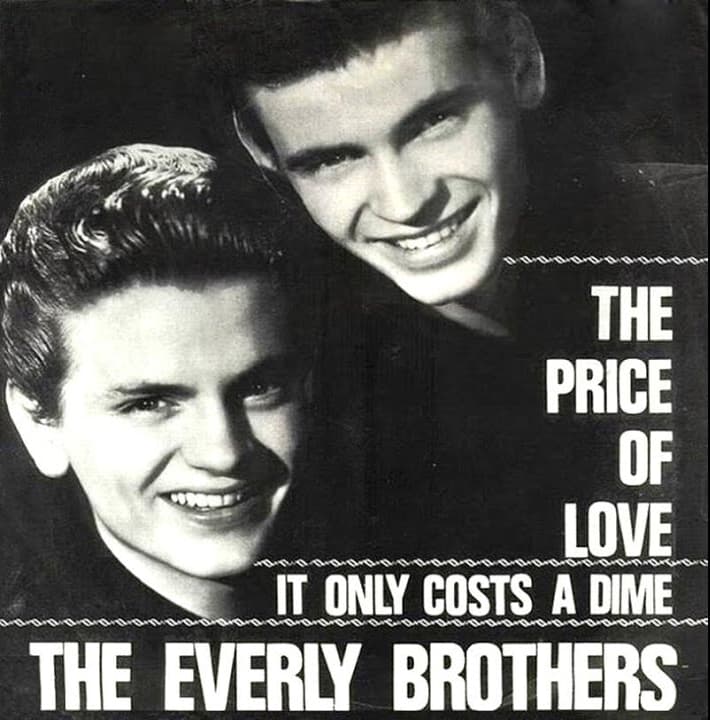
A restless heartbeat set against the cost of desire, “The Price of Love” captures the Everly Brothers at a moment of reinvention and emotional reckoning.
When The Everly Brothers released “The Price of Love” in 1965, it marked one of the most intriguing turns in their storied career. The single climbed to No. 2 on the UK Singles Chart and No. 3 in Ireland, even claiming a brief but triumphant week at No. 1 on the NME chart. Yet in the United States, it slipped quietly past the Billboard Hot 100, an absence that speaks volumes about the shifting cultural currents of the mid-sixties. Though not tied to a parent LP at the time of release, the song stands today as one of the most striking mid-career statements the brothers ever issued: a bold, modernist pulse woven into their unmistakable vocal blend.
What makes “The Price of Love” endure is not merely its chart distinction, but the palpable sense of evolution it carries. By 1965, Don and Phil Everly were navigating a rapidly changing musical landscape. Rock and roll had splintered into new directions, British beat groups dominated charts on both sides of the Atlantic, and the Everlys once foundational architects of harmony-driven American pop found themselves searching for a sound that could bridge their past with the restless pulse of the present. This single became part of that bridge. Its rhythmic insistence, marked by a driving bassline and a percussive, almost proto-garage edge, signaled a step away from the gentler acoustic textures of their late-fifties triumphs.
Thematically, the song turns its gaze toward a universal truth: desire comes with consequence. “Bitter tears” and “broken hearts” are more than passing images; they form the emotional architecture of the piece. The Everlys allow the lyric to speak plainly love extracts its toll, and often the payment comes due in regret, disillusionment, or the hollow ache of promises made too hastily. Yet the delivery is what deepens the meaning. Their harmonies, so often associated with sweetness and youthful longing, take on a sharper, more world-worn edge. There is grit in their phrasing, an emotional gravel that hints at experience gained the hard way.
Musically, the track is a fascinating study in contrasts. The bright, repeating guitar figure suggests motion almost a restless pacing while the vocal line settles into a more contemplative register. This interplay creates a kind of kinetic melancholy, a sense that the heart is running even as the mind replays its wounds. It’s this tension that makes the song feel distinctly modern for its time, almost predictive of the folk-rock textures that would dominate the latter half of the decade.
Culturally, “The Price of Love” occupies a unique place in the Everly Brothers’ catalog. It is a reminder that even artists rooted in the earliest soil of rock and roll were capable of reinvention, capable of using their harmonies not only to soothe but to confront. In its blend of rhythmic bite and reflective melancholy, the song stands as one of their most compelling mid-sixties experiments a testament to the cost of passion, the persistence of regret, and the enduring artistry of two voices moving as one.